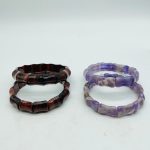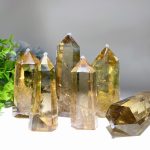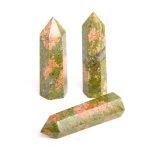Introduction
Embark on an enchanting journey into the world of crystals and gemstones hidden within the depths of rocks. Crystals, with their captivating colors, intricate formations, and enigmatic energies, have long fascinated humans. Discover the secrets to uncovering these natural treasures and unravel the beauty concealed within rocks. This guide empowers you with the knowledge and techniques necessary to embark on a rewarding crystal-hunting adventure.

Geological Foundations
To successfully find crystals in rocks, it’s crucial to understand their geological origins. Crystals form when minerals crystallize from molten rock or mineral solutions. Over millions of years, these processes create pockets and veins within rocks, holding an array of crystals.
Identifying Rock Types
Crystals can be found in various rock types, but some are more likely to yield these treasures.
- Igneous Rocks: Formed from cooled magma or lava, igneous rocks such as granite, pegmatite, and basalt often contain quartz, feldspar, topaz, and other crystals.
- Metamorphic Rocks: Subjected to heat and pressure, metamorphic rocks like marble, schist, and gneiss may hold crystals of garnet, kyanite, and staurolite.
- Sedimentary Rocks: Formed from layers of sediment, sedimentary rocks like limestone and sandstone can contain fossils that have crystallized over time, such as pyrite and marcasite.
Exploration Techniques
Equipped with a keen eye and a thirst for adventure, embark on your crystal-hunting expedition.
- Field Observation: Survey the landscape for rocks that exhibit unusual textures, colors, or outcroppings. Pay attention to cracks, crevices, and quartz veins, as these often indicate crystal-bearing areas.
- Rock Hounding Equipment: Essential tools for rockhounding include a rock hammer and chisel for breaking rocks, a magnifying glass for examining crystals, and a field guide for identifying mineral species.
- Safety First: Always prioritize safety when exploring. Wear appropriate clothing, sturdy footwear, and a hardhat. Avoid loose rocks and unstable areas.
Crystal Identification
Once you locate potential crystal-bearing rocks, the next step is to identify the crystals they contain.
- Visual Inspection: Observe the crystal’s shape, color, luster, and transparency. Refer to field guides or online resources for comparison.
- Hardness Testing: Use a mineral hardness pick or steel knife to determine the resistance of the crystal to scratching. This provides valuable information about its composition.
- Chemical Tests: Advanced methods like X-ray diffraction or chemical analysis can accurately identify crystals, especially when visual inspection proves inconclusive.
Ethical Considerations
While crystal hunting can be a rewarding experience, it’s essential to practice responsible behavior.
- Respect the Environment: Avoid damaging rocks or removing excessive amounts of crystals. Leave the site as you found it, preserving it for future explorers.
- Observe Legal Restrictions: Adhere to local laws and regulations regarding crystal collection. Seek permits or permissions if required.
- Support Sustainable Practices: Support ethical mining and sourcing practices to ensure the preservation of natural crystal resources.
Creative Applications of Crystals
Beyond their aesthetic and collector’s value, crystals have a diverse range of potential applications.
- Jewelry and Art: Crystals are widely used in jewelry, decor, and art due to their beauty and energetic properties.
- Energy Healing: Some believe that crystals possess healing energies and are used in alternative therapies like Reiki and crystal healing.
- Crystal Technology: The unique properties of crystals find application in modern devices such as lasers, clocks, and electronic sensors.
Tables
| Rock Type | Common Crystals | Examples of Locations |
|---|---|---|
| Granite | Quartz, Feldspar, Mica | Yosemite National Park, California |
| Pegmatite | Topaz, Aquamarine, Tourmaline | Maine, United States |
| Marble | Garnet, Calcite, Dolomite | Carrara, Italy |
| Schist | Kyanite, Staurolite, Graphite | Southern Alps, New Zealand |
| Limestone | Pyrite, Marcasite, Fossils | Great Smoky Mountains National Park, Tennessee |
| Crystal Shape | Possible Mineral(s) | Examples |
|---|---|---|
| Hexagonal Prisms | Quartz, Calcite, Apatite | Smoky quartz, Calcite stalactites |
| Cubic Crystals | Pyrite, Galena, Fluorite | Gold, Lead ore, Rainbow fluorite |
| Octahedral Crystals | Spinel, Garnet, Diamond | Ruby, Emerald, Cubic zirconia |
| Tabular Crystals | Feldspar, Mica, Staurolite | Orthoclase, Biotite, Twinned staurolite |
| Crystal Color | Possible Mineral(s) | Examples |
|---|---|---|
| Colorless | Quartz, Calcite, Topaz | Rock crystal, Iceberg calcite, Imperial topaz |
| Red | Ruby, Garnet, Spinel | Pigeon blood ruby, Almandine garnet, Cherry spinel |
| Blue | Aquamarine, Sapphire, Turquoise | Santa Maria aquamarine, Kashmir sapphire, Persian turquoise |
| Green | Emerald, Peridot, Malachite | Colombian emerald, Arizona peridot, Russian malachite |
| Hardness | Mineral(s) with Corresponding Hardness |
|---|---|
| 1 | Talc |
| 2 | Gypsum |
| 3 | Calcite |
| 4 | Fluorite |
| 5 | Apatite |
| 6 | Orthoclase |
| 7 | Quartz |
| 8 | Topaz |
| 9 | Corundum |
| 10 | Diamond |
FAQs
1. What’s the best time of year to find crystals?
Spring and summer months offer better visibility and access to rock exposures.
2. Can you find crystals in any type of rock?
Yes, but igneous, metamorphic, and sedimentary rocks are more likely to contain crystals.
3. How do you clean crystals after finding them?
Gently brush away loose dirt and use a mild detergent or dish soap with lukewarm water. Avoid harsh chemicals or abrasive cleaners.
4. Is it illegal to collect crystals on public lands?
Regulations vary by location. Always check local laws and obtain necessary permits.
5. What are some tips for identifying crystals?
Use a magnifying glass, observe the shape, color, and hardness, and consult field guides or online resources.
6. What’s the most valuable crystal you can find?
Diamonds are generally considered the most valuable crystals, but their value varies depending on size, quality, and color.
Conclusion
Unearth the hidden treasures of crystals concealed within rocks and embark on an enchanting adventure. Armed with the knowledge, techniques, and ethical considerations outlined in this guide, you are well-equipped to uncover the beauty and wonder of crystals in nature. May your explorations yield an abundance of gems and a profound appreciation for the geological wonders that surround us.




























